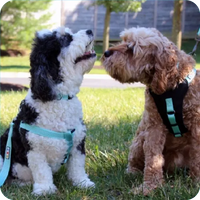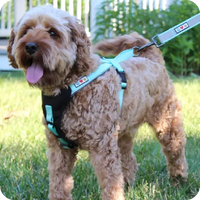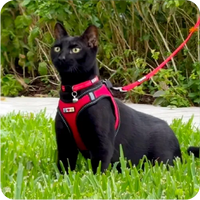HOW TO TOILET TRAIN YOUR PUPPY IN 3 DAYS
HOW TO TOILET TRAIN YOUR PUPPY IN 3 DAYS
Toilet training is one of the common challenges that pet owners face when they first adopt a new dog. We run through some basics for you here.

Whether that dog is a puppy or adult, it is quite likely there will be some accidents to clean up. Unfortunately, while it is a theoretically simple thing to do, training your dog to toilet outside can be frustrating and a lengthier process than it should be, particularly if you don’t have good guidance.
THERE ARE 4 BASIC STEPS TO FOLLOW:
- Keep your puppy with you at all times during toilet training. If you can’t watch closely and attentively, consider crate training or using a playpen, the laundry or the bathroom as a safe den. More on this to follow.
- Use appropriate and motivating rewards. This is usually a treat, as most dogs aren’t motivated enough just by praise or a game. Keep your treats on you at all times so you can reward within a few seconds.
- Take your puppy out every hour. Repetition and consistency is key. The more occasions you have that you can reward the appropriate behavior, the quicker your puppy will ‘get it’. If it has been 24 hours since your puppy last got a reward for toileting in the correct place, it will take much longer to learn.
- Be patient and consistent and avoid punishment. Punishing your dog after an accident will not teach him anything, except that you are to be feared. If an accident happens, move on and try to take your puppy out more frequently.
PUPPY PADS
Many advocate the use of puppy training pads to put on the floor or newspaper to teach your puppy to go in the correct place. Once you have them toileting there, you can start moving them closer and closer to the door. While this will work, you will have to teach your dog to use the pad, then they need to relearn that they then need to start going outside.
It is simpler just to go for the behavior you want the first time around, rather than teach two separate things. The main advantage of these absorbent pads is that they make clean-ups easier, so while your puppy is being crated, or is in his den, playpen or the laundry you can put a puppy pad down to absorb any mess.
CRATE TRAINING/CONFINEMENT
You can’t be with your puppy every second of the day and your puppy does need lots of rest, usually around 16 hours a day. When you and your puppy need a break, send your puppy to bed somewhere that will limit any roaming accidents. For puppies who love to chew things like power cords, this is a safety precaution that can stop your dog getting into mischief when you can’t watch them.
If your dog will need to travel frequently or be confined when guests visit or at night-time, you could also consider investing in a large transport crate that can be your dogs ‘den’. Somewhere that is safe, cozy but big enough to easily turn around in even when fully grown.
Children’s or pet playpens or baby gates across a doorway can be used to similar effect. The additional benefit is that in a smaller area, your dog will either learn to ‘hold on’ to avoid toileting in the cozy ‘den’, or will at least select a place away from his bed to toilet. As soon as you let your dog out from the crate or pen take them to the toileting spot and do not keep your dog confined for long periods of time.
HOW DO I KNOW MY PUPPY NEEDS TO TOILET?
Puppies need to toilet much more frequently than adult dogs. They have small bladders and no instinct to ‘hold on’. Older dogs usually toilet after waking up, 10-20 minutes after eating, drinking and playing and sometimes after being outside. Don’t assume that your dog will know to toilet while outside unless they have learned to do so.
You may only need to take an adult dog outside very 2 hours, while a puppy needs to be taken outside every hour to avoid mistakes. Some early warning signs of a need to urinate or defecate are circling and sniffing the ground. It is much easier to pick up when your dog needs to toilet if you are watching closely or your dog is on a lead with you at all times.
EXTRA TIPS
Set an alarm clock. During the early stages of training, set a timer on your phone or an alarm to remind you to take your puppy or adult dog out every 1-2 hours. If accidents are happening, step up the frequency. This is the key to training your dog in 3 days. Repetition is key.
Use a lead or tether. One of the best ways to make sure your dog stays with you so you can keep an eye on him is to attach his lead to your belt or tether him to your chair if you are working at home. If your puppy is roaming freely, chances are you won’t see him show those early warning signs of needing to go outside.
Introduce a cue word. To encourage toileting on command it doesn’t take much extra work to introduce a word while your dog is urinating or defecating. So when your dog starts toileting say ‘wee wee’ or whistle (or introduce a hand signal) so that the behavior is paired with a command. This means on those cold wintery nights, or during toilet breaks on long road trips you have a way to quickly get your dog to urinate/defecate on command.
Select just one spot in the yard for toileting. Trust me, you will thank me for this when the kids break their promise to faithfully always clean up the poo in the yard. Select an area away from the main play area in the yard that will be the toilet spot. This will stop those brown patches on the lawn and make it much easier for the poo patrol.
Reward! In order to motivate your dog, use valuable rewards. While dogs do respond to praise, for toilet training you want to go all out. Use tasty treats and lavish praise and really go over the top. You want to reward within a few seconds of your pet toileting, so they know what they getting all that attention for. The more motivated your pet is, the more likely they will work harder to get there.























Leave a comment